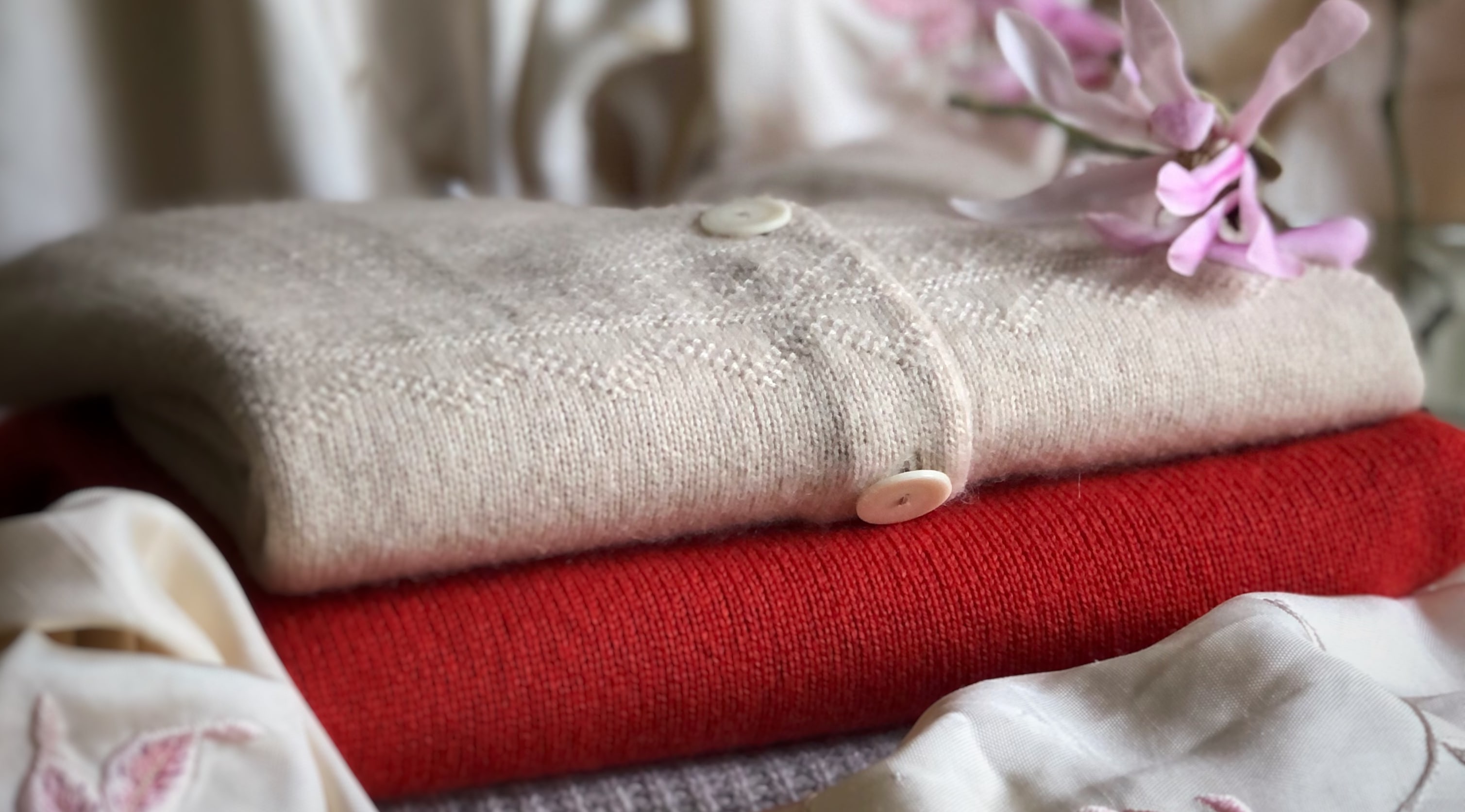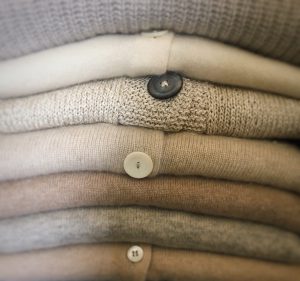
There aren’t many things that can do as much expensive and upsetting damage as clothes moths. Here is a detailed step by step guide to get them out of your cupboards and drawers and keep them out. Moths thrive in quiet, dark places where the larvae can find plenty of the keratin derived from the animal fibres that they eat. That’s why they feast on undisturbed winter clothes squashed together in a wardrobe, especially if they’ve been put away without being cleaned. You’ll need to start with a one-off blitz. It’s a time-consuming slog but it’s essential and a good opportunity to edit, especially when it’s combined with a seasonal changeover. Then it’s just maintenance, vigilance and occasional emptying and vacuuming.
Clearing Out the Cupboards and Drawers
- Take everything out of the cupboard or drawer including the lining paper. Throw the lining paper away.
- Using a vacuum cleaner crevice tool and a small brush, suck and sweep out thoroughly. If you’re worried that there may be larvae lurking in joints or cracks, spray them with a proprietary moth killer.
- For maximum effect pull out all the furniture and rugs and vacuum behind and underneath them. Vacuum upholstered furniture too. Go all around the edge of the room with the crevice tool. Take the vacuum cleaner bag outside to empty it.
- Leave the cupboards and drawers open whilst you deal with the contents.
Cleaning, Washing and Freezing
- Ideally dry clean or wash and iron everything. The ironing is important because the heat kills the larvae. Low temperature washing by itself won’t. If you need some tips for washing cashmere, click here for our Guide.
- Some people swear by freezing. We’re not so sure – it’s hard to achieve the sudden drop to a very low temperature you need all the way to the centre in a domestic freezer. If you’re going to freeze something make sure it’s completely dry and seal it tightly in a vacuum bag. Put it in the warmest place you can find for a few hours and then in the freezer.
- How long to freeze – anything from 2 days to 2 weeks. As a simple rule of thumb the larger the item and the more you’ve had to fold it to fit in the freezer, the longer you’ll need to leave it. Something like a folded vintage army greatcoat will definitely need 2 weeks.
- If you can’t dry clean, wash or freeze something brush it over inch by inch inside and out using the stiffest brush you can without damaging the fabric. Don’t forget pockets, turn-ups and under collars and cuffs. Vacuum up everything that you brush off and empty the vacuum bag outside.

Storage
- Once you’re sure you’ve done everything you can to get rid of any of the little blighters you’re ready to start putting things away.
- Reline shelves and drawers with new lining paper.
- If you’re not going to use or wear something for more than 2 or 3 weeks, you need a physical barrier to stop the moths. Whatever you choose it has to be completely sealed. Moths can get through a tiny hole.
- Sealable plastic bags or vacuum bags work well but aren’t breathable. Wool always has some residual moisture so when you take it out it will have a slightly musty smell.
- Tightly woven thick linen bags like the ones in the photo work brilliantly if they are sealed from edge to edge with Velcro. The ribbons are just for decoration. The Velcro is doing the work.
- For anything larger than sweaters or that needs to hang, a bag made of Tyvek 1623E is the answer. Tyvek is a breathable and almost indestructible membrane. It won’t be as pretty but it’s very effective.
- Cut a strip of Tyvek wide enough for whatever you want to store and double the length.Fold it in half and stitch down each side to form a bag. If you’re putting it over a hanger, cut a tiny notch in the bag just big enough to poke the metal hanger hook through. Seal the bottom of the bag with stick-on Velcro.

Keeping moths away from what you’re wearing and using now
- Always keep them at the front of the drawer or cupboard or on open shelves in a walk-in dressing room so that they get light and air regularly.
- Shake them out before you put them away and brush off any hair or food particles.
- Don’t be tempted to buy those skinny velvet hangers that tell you that you can fit twice as much into your hanging space.
- Clothes should be just touching. If you squash them in tightly, it’s moth heaven.
- Don’t forget to tuck in lots and lots of lavender bags or bars of traditionally scented lavender soap.
- And lastly, if you have a really serious infestation in the fabric of the house – under the floorboards, in the carpets, curtains and furniture – don’t delay. Call in a professional exterminator!




